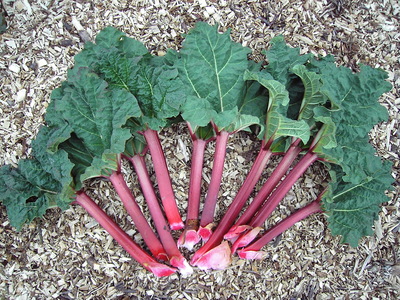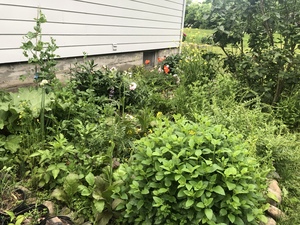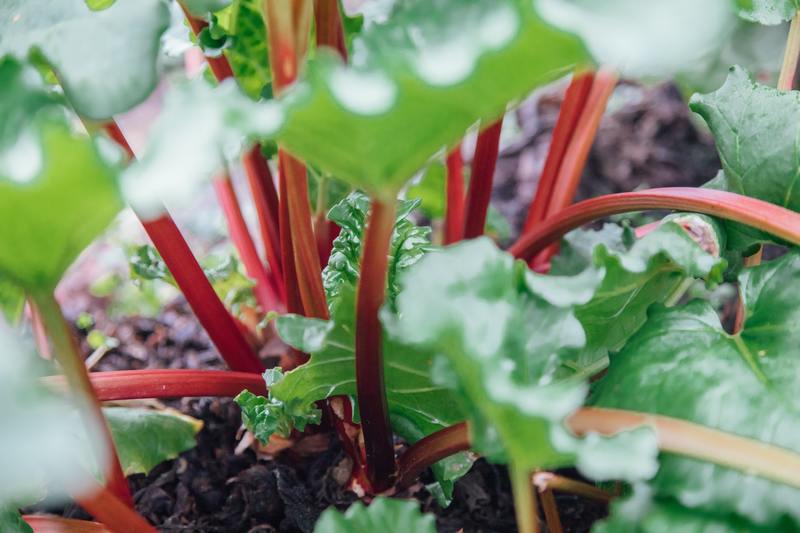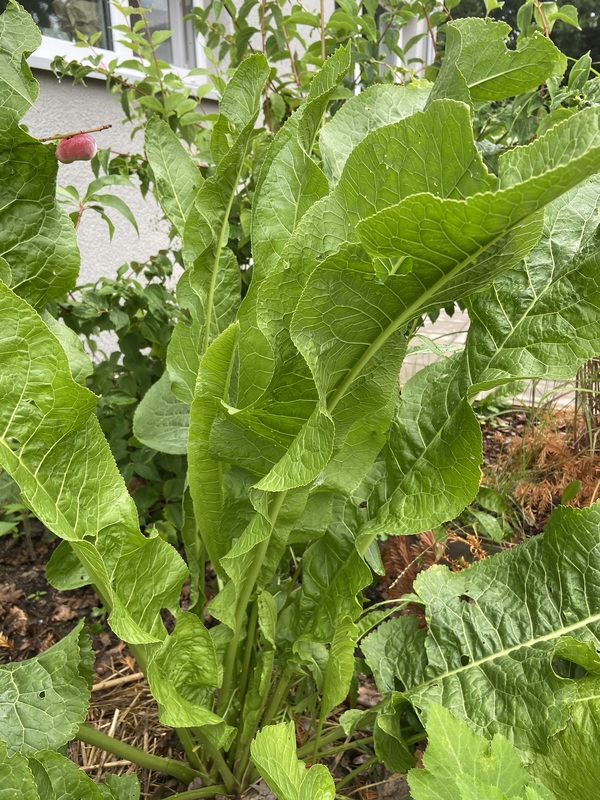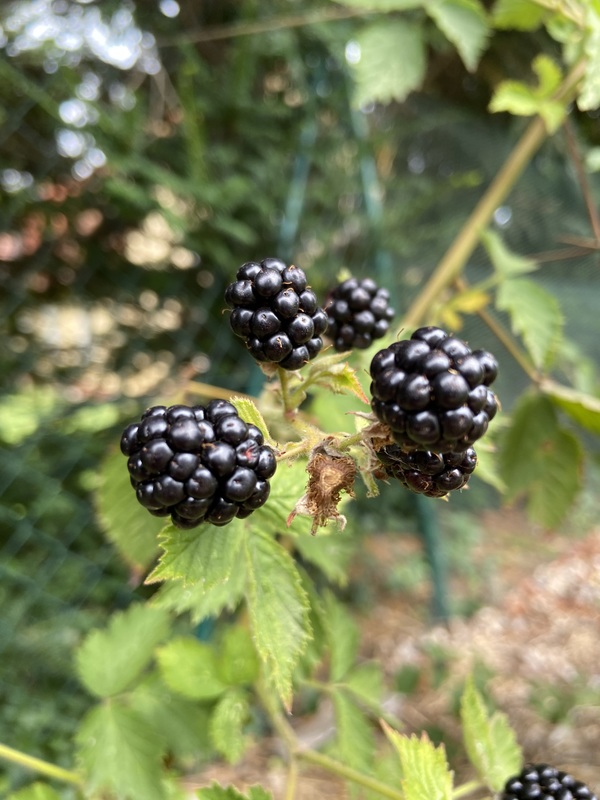Description
Rhubarb (Rheum × hybridum) is a perennial plant that is native to Asia, specifically the region that includes Tibet, China, and Mongolia. It is a member of the Polygonaceae family, which includes other plants such as sorrel and buckwheat.
Rhubarb has large, triangular-shaped leaves that are dark green in color and have long, thick petioles (leaf stalks) that are typically red, pink, or green in color. The leaves are toxic and should not be eaten, but the petioles are edible and are often used in culinary dishes.
The plant can grow to be quite large, reaching heights of up to 5 feet and widths of 3-4 feet. It has thick, fleshy roots that can be harvested and used medicinally. Rhubarb grows best in cool, moist conditions and requires regular watering and well-draining soil.
One way to differentiate rhubarb from similar plants is by its large leaves and thick, red petioles. Additionally, the plant produces small, greenish-white flowers in the summer months.
Rhubarb is edible and the petioles are often used in culinary dishes such as pies and jams. The leaves should not be eaten because they are toxic. After harvest, the petioles can be stored in the refrigerator for several days.
In addition to its culinary uses, rhubarb has a number of other uses. The roots can be dried and used medicinally as a laxative, and the plant can also be used as a natural fertilizer in gardens. Additionally, the large leaves can be used as mulch and the plant can be used as a ground cover. It does not have much value for wildlife, as the leaves are toxic.
Rhubarb is a vegetable derived from cultivated plants in the genus Rheum in the family Polygonaceae. The whole plant – a herbaceous perennial growing from short, thick rhizomes – is also called rhubarb. Historically, different plants have been called “rhubarb” in English. The fleshy, edible stalks (petioles) of other species and hybrids (culinary rhubarb) were cooked and used for food. The large, triangular leaves contain high levels of oxalic acid and anthrone glycosides, making them inedible. The small flowers are grouped in large compound leafy greenish-white to rose-red inflorescences.
This is the most common culinary and cultivated variety. The name Rheum rhabarbarum or Rheum undulatum refers to the wild species and are used synonymously (but wrongly) for this plant.
Links
Rhubarb @ Oregon State Extension
Propagation
Division
Divide the crowns are well-developed rhubarb plants in dormancy in early spring or mid fall. Cut each crown into several pieces, each with at least one bud on it. Plant in the ground as soon as possible. Dig holes, and mix native soil with compost. Plant the top of the crown 1 to 2 inches below the soil surface and pack soil so there are no air pockets. Water thoroughly.
